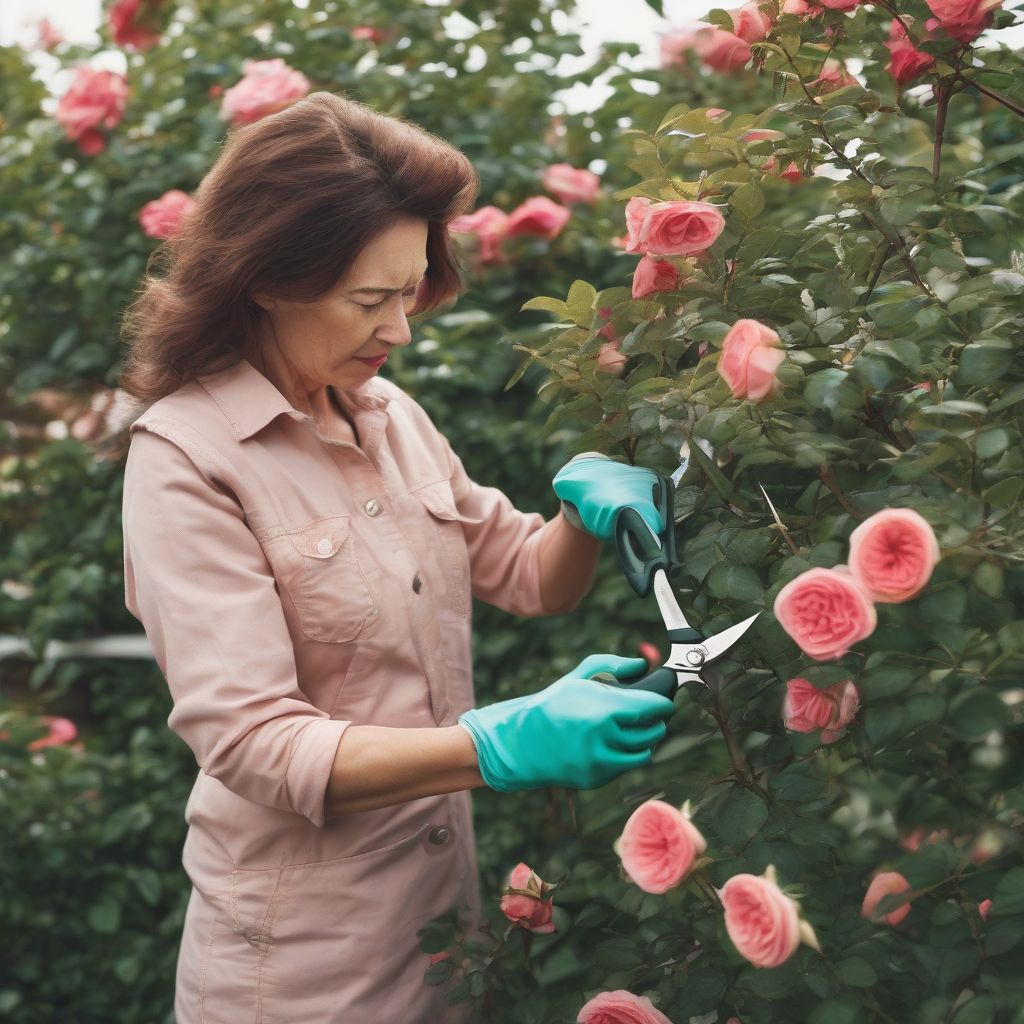Have you ever looked at your garden and thought it looked a bit… crowded? Or perhaps your favorite houseplant seems a little leggy and less vibrant? Just like a healthy diet helps us thrive, pruning is like a dose of vitamins for your plants. It’s not just about looks, though a well-pruned plant is undoubtedly a sight to behold! Pruning helps your leafy friends grow stronger, resist pests and diseases, and ultimately, flourish.
As a nutritionist and meal-planning coach, I understand the importance of providing the right nourishment and care for optimal growth. With plants, it’s no different. Let’s delve into the world of pruning and learn how a few strategic snips can make all the difference.
Understanding the Why and When of Pruning
Before we grab our gardening shears, it’s crucial to understand the “why” and “when” of pruning.
Why Prune?
- Enhanced Growth: Pruning encourages your plants to redirect their energy from old, unproductive growth to new, healthy shoots.
- Improved Aesthetics: Shaping your plants through pruning creates a more pleasing and visually appealing garden or indoor plant collection.
- Increased Flower and Fruit Production: For flowering plants and fruit trees, pruning stimulates the development of more flower buds, leading to a more bountiful harvest.
- Disease Prevention: Pruning removes diseased or damaged branches, preventing the spread of infections to healthy parts of the plant.
- Pest Control: Pruning eliminates potential hiding places for pests, making it harder for them to infest your plants.
When to Prune?
The best time to prune depends on the type of plant and your climate.
- Late Winter/Early Spring: This is the ideal time to prune most deciduous trees and shrubs while they are dormant.
- Spring/Summer: For many flowering plants, pruning immediately after they bloom encourages a second flush of flowers.
- Fall: Avoid heavy pruning in the fall, as it can stimulate new growth that may be vulnerable to winter damage.
Essential Pruning Tools and Techniques
Just as you wouldn’t use a butter knife to chop vegetables, the right pruning tools are essential for healthy plants.
Pruning Tools:
- Hand Pruners: Ideal for small branches and stems up to about ¾ inch in diameter.
- Lopping Shears: Designed for thicker branches up to 2 inches in diameter.
- Pruning Saw: Used for removing large branches that are too thick for loppers.
- Gardening Gloves: Protect your hands from thorns and cuts.
Basic Pruning Techniques:
- Heading Back: Removing the tip of a branch or stem to encourage lateral branching and create a bushier plant.
- Thinning Out: Removing an entire branch or stem back to its point of origin to improve air circulation and reduce crowding.
- Pinching: Using your fingers to pinch off the growing tips of stems, promoting bushier growth and more flowers.
- Deadheading: Removing faded or spent flowers to redirect energy back into the plant and encourage further blooming.
A Step-by-Step Guide to Pruning Your Plants
Now that we have the basics down, let’s put our knowledge into practice.
- Inspect Your Plants: Before making the first cut, carefully examine your plants for any signs of disease, pests, or damaged branches.
- Gather Your Tools: Ensure your pruning tools are sharp and clean to prevent the spread of diseases.
- Make Clean Cuts: Cut branches at a 45-degree angle, just above a leaf node or bud. This encourages new growth in the desired direction.
- Avoid Over-Pruning: It’s always better to prune lightly and gradually than to remove too much at once. Over-pruning can stress your plants and hinder their growth.
- Dispose of Cuttings Properly: Diseased or infested branches should be disposed of in the trash to prevent spreading problems to other plants.
Pruning Tips for Specific Plant Types
Pruning requirements can vary significantly depending on the type of plant you are working with.
Trees:
- Young Trees: Focus on establishing a strong central leader and removing competing branches.
- Mature Trees: Prune to maintain shape, remove dead or diseased wood, and improve air circulation.
- Fruit Trees: Pruning techniques vary depending on the type of fruit tree. Consult a specialized guide or expert for best practices.
Shrubs:
- Flowering Shrubs: Prune after flowering to encourage more blooms in the next season.
- Evergreen Shrubs: Prune lightly to maintain shape and remove any dead or diseased branches.
 Pruning a Rose Bush
Pruning a Rose Bush
Houseplants:
- Leggy Plants: Pinch back stems to promote bushier growth.
- Overgrown Plants: Repot into a larger container or prune back roots and stems to manage size.
Common Pruning Mistakes to Avoid
Even experienced gardeners make pruning mistakes. Here are a few common pitfalls to avoid:
- Pruning at the Wrong Time: Pruning at the wrong time of year can weaken your plants and reduce flower or fruit production.
- Making Improper Cuts: Uneven or jagged cuts can damage plant tissue and make them more susceptible to diseases.
- Over-Pruning: Removing too much foliage can shock your plants and hinder their ability to photosynthesize effectively.
Conclusion: Pruning for a Thriving Garden
Just like a well-balanced meal plan nourishes our bodies, proper pruning is essential for the health and vitality of our plants. By understanding the principles of pruning, investing in the right tools, and following these practical tips, you can encourage your leafy companions to thrive, bloom, and flourish for years to come.
Remember, gardening is a journey of learning and experimentation. Don’t be afraid to get your hands dirty, observe your plants, and adjust your pruning techniques as needed. Your garden will reward you with vibrant growth and bountiful harvests.
Now, it’s your turn! What are your favorite plants to prune, and what challenges have you encountered? Share your experiences and tips in the comments below!
[amazon bestseller=”pruning shears”]
